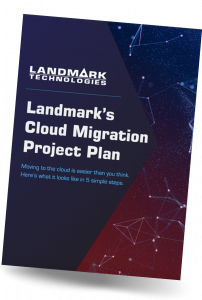Cloud Migration: here’s where to start
If your business hasn’t migrated to the Cloud yet, it is missing out. This massive data resource doesn’t just make your life easier; it offers several other benefits. But what is the Cloud?
The Cloud is the place where your data is hosted over the internet, instead of it being stored on physical hard drives. There’re 3 main categories of cloud services: infrastructure as a service (IaaS), platform as a service (PaaS), and software as a service (SaaS). The Cloud can be public, private, or hybrid – which is a bit of both.
So, if you’re still unsure whether to migrate to the Cloud and need a nudge to get started, we’ll tell you all you need to know about cloud computing.
What are the benefits of migrating to the Cloud?
Migrating to the Cloud can have several benefits for your business. Here’s a short breakdown of the main areas your business can improve by migrating:
- Flexibility: It enables access to files and documents anytime, from any device, and no matter where you are.
- Business Continuity: The Cloud backs up all your data and recovers it, should something happen to your computers.
- Cost savings: Only pay for what you need – cloud providers allow you to cut down on operational costs of hardware, databases, system upgrades, etc.
- Scalability: They’re ideal for businesses that are growing or fluctuating, as you can always scale up or down if you need to change your capacity.
- Security: The Cloud keeps your data safe in case your hardware stops working.
Sound promising? If you want to find out more about the benefits of the Cloud for your business, you should check this out.
What Cloud providers are there?
There are several cloud providers, Microsoft and Amazon being the leading ones. They’re closely followed by Google, IBM and Alibaba.
If you’re unsure which provider to go for, it’s always a good idea to take costs, reliability, security, and where the data is stored into account. Microsoft and Amazon, for example, have data centres all over the world, meaning this makes them faster and more reliable than other providers.
First steps
Migrating into the Cloud or moving parts of your data into it needs some consideration. There’re a few steps along the way that you should make sure to follow:
1. Involve the team
The first step in embarking on a successful cloud migration journey is involving everyone in a management position. Include your Head of Tech, CEO, CTO, CFO and any other key people, you think need to be involved. Ensure they’ve been consulted and have confirmed they’re happy with the resources needed to implement the change, and the implications of how the change will h be implemented. Once resources and requirements are defined and agreed upon, it’s time to look at the budget. If you need help at any stage our team of specialists are happy to help.
2. Develop Cloud Migration Strategy
The second step for successful cloud migration is having a good strategy in place. This strategy needs to be tailored to your business needs. Planning ahead and determining exactly what you want to achieve from the Cloud; what data needs to be stored on the Cloud; what kind of Cloud you want for your business, etc; is key to ensure you can meet your business goals.
3. Read our eBook to find out about the next steps
There are a few more steps you need to follow for your cloud migration project, which is why we’ve created a handy eBook. In here you’ll find out about the next steps, and everything you need to know to embark on your cloud migration journey.
You can download our eBook for free, and don’t hesitate to get in touch with our team if you’d like any further help or advice.










